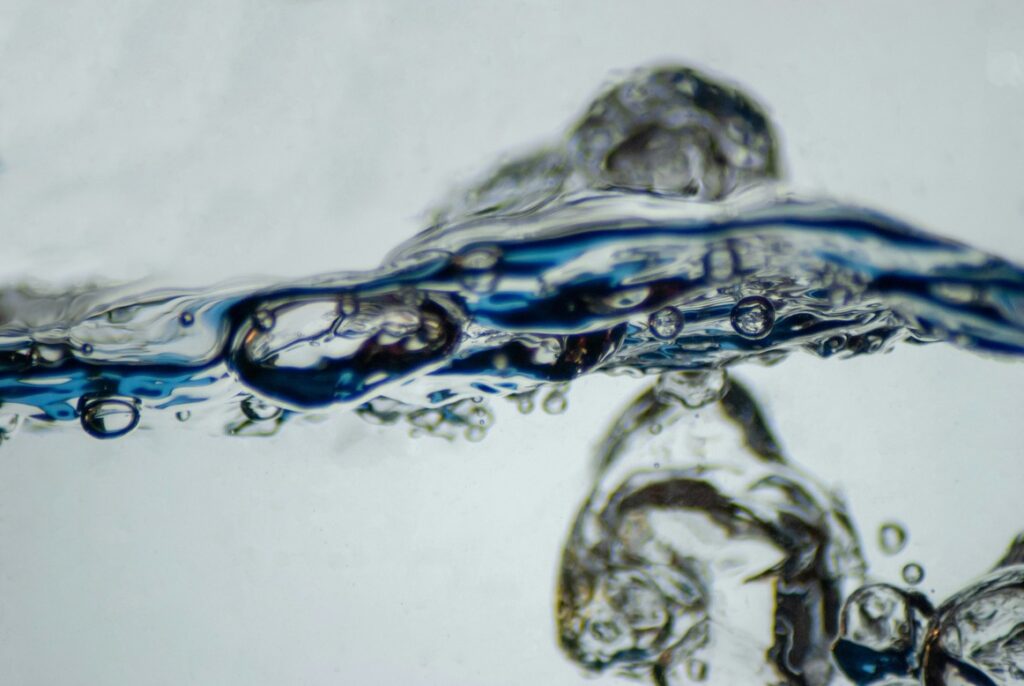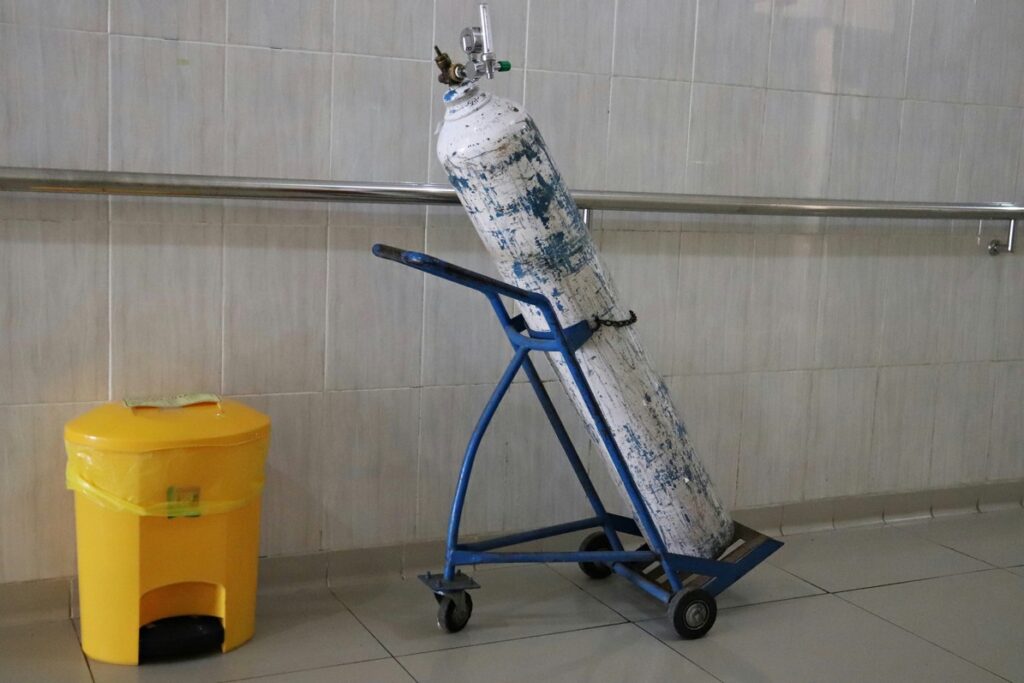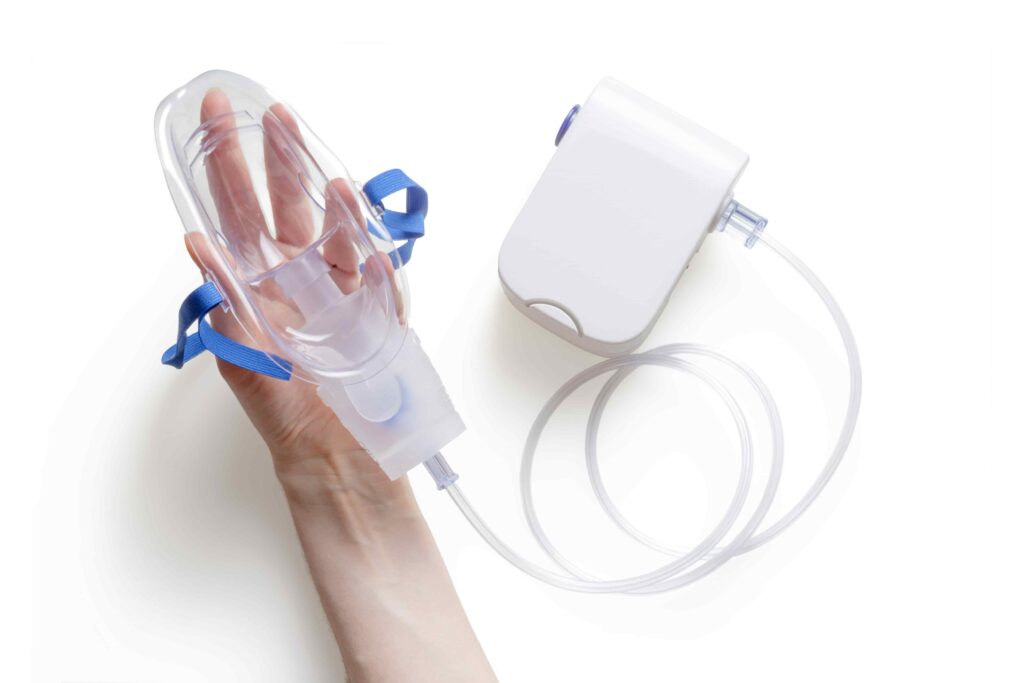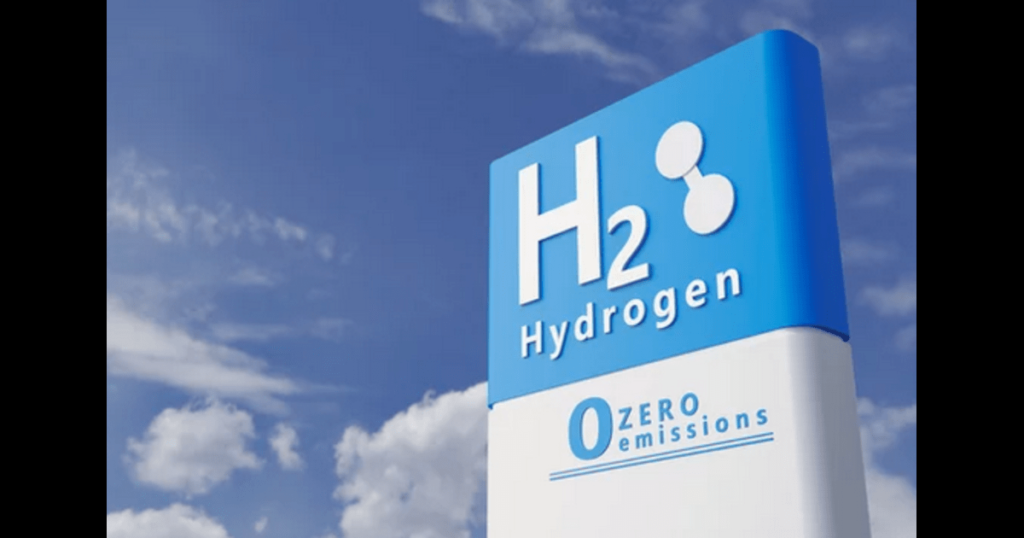When we talk about green hydrogen production through electrolysis, the conversation usually centres on the hydrogen itself. Yet every kilogramme of hydrogen created brings along eight kilogrammes of oxygen.
For most electrolyser installations worldwide, this oxygen vents into the atmosphere, unused and unnoticed.
Hospitals across Europe use vast quantities of medical oxygen daily. Could these two worlds meet in a way that makes both environmental and economic sense?
The Oxygen Nobody Talks About
Water electrolysis splits H₂O molecules into their constituent parts. The chemistry is straightforward enough. At the cathode, hydrogen bubbles away. At the anode, oxygen collects in roughly the same proportion by volume. For a typical one-megawatt electrolyser producing 74 tonnes of hydrogen annually, around 630 tonnes of oxygen emerges as well.
Most installations treat this oxygen as something between an inconvenience and a hazard. Safety protocols require venting it away from buildings and ignition sources. The gas disappears into the air, contributing nothing to the project’s economics or sustainability credentials. Meanwhile, down the road, hospitals are receiving regular deliveries of liquid oxygen tankers or managing banks of high-pressure cylinders.
The Viamed San José Hospital in Murcia, Spain, became the first facility in the country to close this loop in 2022. Their system combines photovoltaic solar panels, a water electrolyser, and the infrastructure to capture and purify the oxygen by-product. The oxygen purity coming directly from their electrolyser reaches 99.7 percent, which sits close to the medical grade threshold of 99.5 percent required by pharmacopoeias worldwide.
This raises an intriguing question. If the oxygen is already that pure, and the hospital needs substantial quantities anyway, why isn’t this happening everywhere?

Understanding Medical Grade Requirements
Medical oxygen is a pharmaceutical product, subject to the same regulations as any other drug. The European Pharmacopoeia and United States Pharmacopeia set exacting standards for purity, testing protocols, storage conditions, and traceability. Every batch must be documented. Every cylinder carries a pharmaceutical license.
The purity specification of 99.5 percent minimum sounds straightforward until you examine what constitutes that remaining 0.5 percent. Carbon monoxide must stay below 5 parts per million. Carbon dioxide cannot exceed 300 ppm. Water content requires strict control. The tolerances leave little room for variation, and good reason exists for this stringency. A patient on supplementary oxygen may be breathing it for days or weeks. Any contaminants accumulate in the lungs and bloodstream.
Oxygen from an alkaline electrolyser emerges saturated with water vapour and typically contains one to four percent hydrogen due to gas crossover through the membrane. The raw product also carries trace amounts of potassium hydroxide from the electrolyte solution. None of these impurities poses an unbeatable challenges, but each requires specific treatment steps.
Hydrogen removal happens through catalytic oxidation. The mixed gas stream passes over a catalyst bed where residual hydrogen reacts with oxygen to form water. The reaction proceeds at relatively low temperatures, avoiding the complexity of thermal processing. Systems designed for this purpose can reduce hydrogen content to below five parts per million, well within the margins needed for medical applications.
Water removal proves more involved. Initial condensation removes the bulk moisture by cooling the gas stream. Then the oxygen enters temperature swing adsorption or pressure swing adsorption vessels filled with molecular sieves.
These materials selectively trap water molecules while allowing oxygen to pass through. When one vessel becomes saturated, the system switches to a second vessel while regenerating the first through heating or depressurisation. Properly designed TSA systems achieve dew points below minus 60 degrees Celsius, corresponding to water content under five ppm.
The final purification stage removes any remaining traces of alkaline electrolyte through scrubbing systems. Multiple stages of gas-liquid separation ensure the oxygen stream contains no carryover from the electrolyser’s operating fluids.

Hospital Infrastructure and Integration Points
Modern hospitals receive oxygen through one of several pathways. Large facilities often maintain vacuum-insulated evaporators containing liquid oxygen at minus 183 degrees Celsius. The liquid vaporizes on demand, warming to ambient temperature before entering the pipeline network. Medium-sized hospitals might use manifold systems with banks of high-pressure cylinders that automatically switch when one runs low. Increasingly, hospitals are installing pressure swing adsorption plants that extract oxygen from ambient air.
All three systems feed into a medical gas pipeline that operates at approximately 4 to 4.4 bar pressure. The network extends throughout the facility, terminating in colour-coded outlets at patient bedsides, operating theatres, intensive care units, and emergency departments. Each outlet incorporates non-interchangeable fittings specific to oxygen, preventing accidental connection of incompatible gases.
Integrating electrolyser oxygen into this existing infrastructure requires careful consideration of pressure, purity monitoring, and regulatory compliance. The oxygen compression system must deliver gas at pipeline pressure with sufficient flow capacity to meet peak demands. For a 200-bed hospital, oxygen consumption averages between 150 and 300 cubic metres daily, with substantial variations depending on the patient mix and acuity levels. Critical care beds may consume 50 litres per minute per ventilator, whilst ward patients on supplementary oxygen typically use five to fifteen litres per minute.
The H2Heat project at the University Maternal and Children’s Island Hospital in Gran Canaria illustrates the scale of integration required. The hospital’s heating demands drive the electrolyser operation, producing hydrogen for the combined heat and power system. The oxygen production of roughly 630 tonnes annually translates to approximately 1,730 cubic metres per day, potentially exceeding the hospital’s direct oxygen needs by a factor of five to ten.
This mismatch actually creates opportunity rather than problems. Excess oxygen can be liquefied and stored for use during periods when the electrolyser isn’t operating. Alternatively, the hospital can supply oxygen to other facilities within the health service network. The Canary Islands Health Service operates multiple hospitals across the archipelago, many of which currently depend on tanker deliveries of liquid oxygen shipped from the mainland.
Safety Considerations and Risk Management
Oxygen-enriched environments present fire risks that demand serious attention. Materials that burn sluggishly in normal air can ignite violently in pure oxygen. The minimum ignition energy drops dramatically, and combustion propagates much more rapidly. Hospital environments add further complexity because of the presence of patients, many of whom cannot evacuate quickly in an emergency.
The electrolyser itself operates with oxygen at atmospheric pressure or slightly above. The oxygen processing equipment, compression stages, and storage vessels all require ATEX certification for operation in potentially explosive atmospheres. Material selection becomes critical. Copper and copper alloys remain the standard for oxygen piping due to their excellent resistance to oxidation and fire propagation characteristics. Stainless steel grade 316 or better provides suitable performance for vessels and fittings.
All electrical components in the oxygen processing area must comply with regulations for oxygen-enriched atmospheres. The hydrogen produced simultaneously adds a second set of safety considerations, though the gases separate early in the process flow.
Ventilation systems must ensure no hydrogen accumulation in enclosed spaces, with continuous monitoring and automated alarm systems. The oxygen venting locations require careful positioning away from hydrogen vent outlets, building air intakes, and ignition sources.
Safety protocols extend beyond the hardware. Staff training becomes absolutely essential. Hospital maintenance personnel must develop competency in hydrogen and oxygen system operation, understanding the distinct characteristics of each gas. Oxygen’s invisible flame, wide flammability range, and low ignition energy require new safety procedures compared to natural gas boilers or conventional electrical systems.
The Spanish example at Viamed San José highlights the regulatory approval process. The hospital has produced oxygen since 2022 but awaits formal authorisation from health authorities to supply it directly to patients. The oxygen undergoes continuous purity monitoring, with samples tested against pharmacopoeia specifications before any clinical use.
The Economics of Co-Production
Hospital oxygen costs vary widely depending on the supply method, location, and contract terms. Liquid oxygen delivered in bulk typically costs between 40 and 70 eurocents per cubic metre at normal pressure. High-pressure cylinders run substantially higher, often exceeding one euro per cubic metre when delivery, cylinder rental, and handling costs factor in. A 200-bed hospital consuming 70,000 cubic metres monthly faces oxygen bills of 28,000 to 70,000 euros depending on their supply arrangement.
Producing oxygen through an onsite PSA plant reduces costs significantly, with studies showing oxygen production at 12 to 20 euros per cubic metre when operating on grid electricity. However, PSA plants carry capital costs of 500,000 to two million euros depending on capacity, plus ongoing maintenance and electricity consumption.
The electrolyser oxygen pathway presents a different economic equation. The capital investment in the electrolyser serves primarily to produce hydrogen, with oxygen as a valuable by-product rather than the main objective. The additional costs for oxygen purification, compression, and storage are incremental to the hydrogen production facility. Economic analyses from projects suggest that selling purified oxygen at one euro per cubic metre allows payback of the entire electrolyser investment within three to five years when combined with hydrogen sales.
The Canary Islands location adds another dimension. As an island system without gas pipeline connections to mainland Spain, the region imports all fossil fuels. A local production of both hydrogen and oxygen could reduce this dependence while creating economic activity on the islands themselves. The Canary Islands Health Service’s plan to extend the model across ten additional hospitals by 2030 demonstrates confidence in the economic sustainability of the approach.
Environmental and Circular Economy Benefits
The environmental calculus extends beyond carbon emissions alone. Conventional oxygen supply chains involve energy-intensive cryogenic air separation at centralized plants, compression into liquid form, transport in specialized tanker trucks, and storage in vacuum-insulated vessels at hospital sites. Each step consumes energy and creates emissions.
Producing oxygen locally from renewable-powered electrolysis eliminates these transport emissions entirely. The water consumed in electrolysis returns to the cycle through combustion in the hydrogen-fueled CHP unit, creating a largely closed water loop. Studies comparing lifecycle emissions show electrolyser oxygen from renewable electricity carries approximately ten percent of the carbon footprint of conventionally supplied oxygen when transport is included.
Real-World Implementation Challenges
The theoretical benefits of integrating electrolyser oxygen into hospital medical gas systems face several practical hurdles. Regulatory approval processes in many jurisdictions weren’t designed with this pathway in mind. The drug licensing frameworks assume oxygen originates from industrial gas companies operating under pharmaceutical manufacturing licenses. The concept of a hospital producing its own oxygen from water electrolysis doesn’t fit neatly into existing categories.
The Viamed San José experience illustrates this challenge. Their system operates successfully from a technical standpoint, producing high-purity oxygen. Yet the regulatory approval to actually supply that oxygen to patients has taken longer than anticipated, requiring extensive documentation, quality management systems, and demonstration of consistency. The hospital effectively needs to operate as a pharmaceutical manufacturer for oxygen, with all the associated quality assurance protocols.
Staff training and institutional readiness present another layer of challenge. Hospital biomedical engineering teams have decades of experience managing oxygen supply systems. Introducing an electrolyser-based supply requires new competencies in hydrogen production, gas purification, and integrated energy systems management. The institutional culture shift from being an oxygen consumer to becoming an oxygen producer shouldn’t be underestimated.
Infrastructure integration into older hospital buildings creates practical constraints as well. Installing an electrolyser, compression equipment, storage vessels, and purification systems requires significant space, often in short supply at urban hospital sites. The equipment generates noise and heat that must be managed to avoid disturbing patients or staff. Electrical supply upgrades to accommodate megawatt-scale electrolysers may require utility coordination and substantial capital investment.
Pathways Forward for Broader Adoption
Despite these challenges, several factors suggest the concept will gain traction. The global momentum toward green hydrogen production is creating thousands of new electrolyser installations. As this installed base grows, the opportunity cost of wasting oxygen becomes increasingly apparent. Projects that can demonstrate successful oxygen valorization create templates for others to follow.
Regulatory frameworks are beginning to evolve as well. The World Health Organization’s update to the International Pharmacopoeia in 2021 now recognizes oxygen at 93 percent purity as suitable for respiratory care in low-resource settings. This pragmatic approach acknowledges that perfect shouldn’t be the enemy of good, particularly in regions where medical oxygen remains scarce. Electrolyser oxygen, even without extensive purification, exceeds this threshold comfortably.
The economic pressures on healthcare systems globally create additional motivation. Hospital oxygen consumption surged during the COVID-19 pandemic and has remained elevated. Many regions experienced supply shortages and price volatility. The value proposition of local oxygen production, particularly when coupled with decarbonization benefits, resonates with health system administrators.
For projects like H2Heat, the demonstration phase serves a crucial function beyond the immediate facility. Success in Gran Canaria provides evidence that the technical, regulatory, and operational challenges can be overcome. The detailed performance data, economic analysis, and lessons learned become resources for the next wave of implementations. The Canary Islands Health Service’s roadmap to extend the model across multiple hospitals creates a pathway for scaling that addresses the economy-of-scale questions.
Looking Toward Implementation
The theoretical case for integrating electrolyser oxygen into hospital medical gas supply is compelling. The technical feasibility has been demonstrated. The economic analysis shows potential for cost reduction and revenue generation. The environmental benefits align with the urgent need to decarbonize healthcare.
The practical pathway from theory to widespread implementation requires systematic attention to several elements. First, continued dialogue between electrolyser manufacturers, medical gas specialists, and hospital operators can refine the equipment specifications and integration approaches. Standardized designs for oxygen purification trains would reduce engineering costs and accelerate deployment.
Second, regulatory pathways need clarification and potentially streamlining in many jurisdictions. The frameworks exist to ensure oxygen safety and quality, but they need updating to accommodate this new production method without creating unnecessary barriers. Industry associations, health regulators, and pilot projects like H2Heat can collaborate to develop appropriate guidance documents.
Third, the financial models require further refinement as real operational data accumulates. The capital costs, operating expenses, maintenance requirements, and revenue potential all benefit from empirical validation. Projects that transparently share their economic results will help subsequent implementations develop more accurate business cases.
The H2Heat project stands at this interesting intersection of necessity and opportunity. The Canary Islands need decarbonization solutions that work for island energy systems without gas pipeline infrastructure. Hospitals need reliable, affordable oxygen supply regardless of external disruptions. Green hydrogen production creates oxygen that currently goes unused. Bringing these elements together into an integrated system demonstrates the kind of creative problem-solving that the energy transition demands.
The question is how quickly the regulatory, institutional, and economic pieces can align to make it happen at scale. For healthcare systems working toward net-zero emissions whilst managing constrained budgets, the answer matters considerably.
References
- World Health Organization. (2021). The International Pharmacopoeia: Oxygen for Respiratory Care.
- International Energy Agency. (2024). The Future of Hydrogen: Seizing Today’s Opportunities.
- Maggio, G. et al. (2022). Hydrogen and medical oxygen by renewable energy based electrolysis: A techno-economic analysis. Applied Energy.
- Bornemann, L. et al. (2025). Oxygen production via electrolysis: A model-based assessment of its impact on a climate-neutral energy system. Energy Conversion and Management.
- European Medicines Agency. (2023). Guideline on Medicinal Gases: Pharmaceutical Documentation Requirements.
- Panchawadkar, D. et al. (2024). Review of opportunities to valorise the oxygen generated from green hydrogen production. International Journal of Hydrogen Energy.
- Spanish National Health System. (2023). Hospital Oxygen Supply Systems: Cost-Benefit Analysis of Alternative Production Methods.
- Canary Islands Health Service. (2025). Zero Net Emissions Strategy 2030: Implementation Update.
- Hyde, K. (2025). Why can’t electrolyser oxygen be used for medical purposes? LinkedIn Technical Insights.



